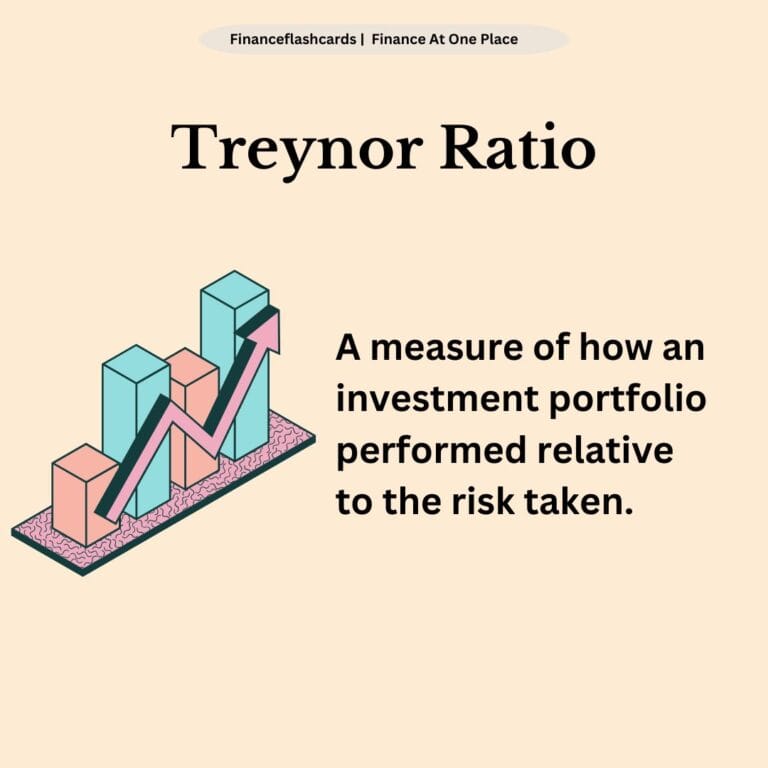Treynor Ratio: What it is, Formula to Calculate it and More
The Treynor Ratio is a financial metric that measures the returns of an investment relative to its systematic risk, represented by beta. It is particularly useful for evaluating the performance of a portfolio or a mutual fund when compared to market benchmarks.
Table of Contents

The Treynor Ratio evaluates a portfolio’s return relative to the amount of market risk (systematic risk) taken. It helps investors determine if the portfolio is generating adequate returns for the level of risk it carries. Below is the detailed breakdown:
Formula
The formula in symbols is:
Where:
- : Portfolio Return
- : Risk-Free Rate
- : Portfolio Beta (systematic risk measure)
Example Calculation
Imagine analyzing a mutual fund with the following parameters:
- Portfolio Return (Rp): 12%
- Risk-Free Rate (Rf): 3%
- Portfolio Beta (
βp): 1.5%
Plugging into the formula:
Interpretation: For every unit of market risk taken, the portfolio generates a return of 6%. A higher Treynor Ratio indicates more efficient management of market risks.
Advantages
The Treynor Ratio offers several distinct advantages, particularly for investors focusing on risk-adjusted returns. One of its primary benefits is its focus on systematic risk, which represents the portion of risk directly tied to market exposure and cannot be eliminated through diversification.
By isolating this specific risk, the Treynor Ratio provides a clear insight into how effectively a portfolio is compensating investors for the inherent risks of market participation. This makes it particularly useful for portfolios that are well-diversified, as unsystematic risks (those tied to individual securities) are not a factor in the calculation.
Moreover, the Treynor Ratio complements other performance metrics, such as the Sharpe Ratio, to provide a more comprehensive understanding of risk-adjusted performance. While the Sharpe Ratio accounts for total risk (both systematic and unsystematic), the Treynor Ratio’s emphasis on systematic risk allows investors to make more targeted decisions based on their exposure to market movements.
Disadvantages
A main weakness of the Treynor ratio is its backward-looking nature. Investments are likely to perform and behave differently in the future than they did in the past. The accuracy of the Treynor ratio is highly dependent on the use of appropriate benchmarks to measure beta.
Furthermore, the Treynor Ratio does not account for unsystematic risk, which is the diversifiable risk unique to individual securities or industries. While it is useful for assessing diversified portfolios where unsystematic risk is minimized, it may not be suitable for less diversified investments.

